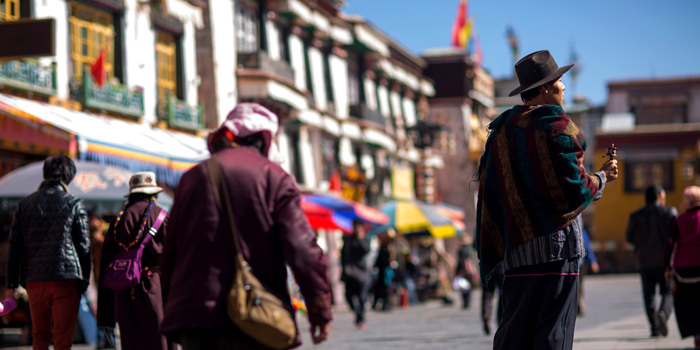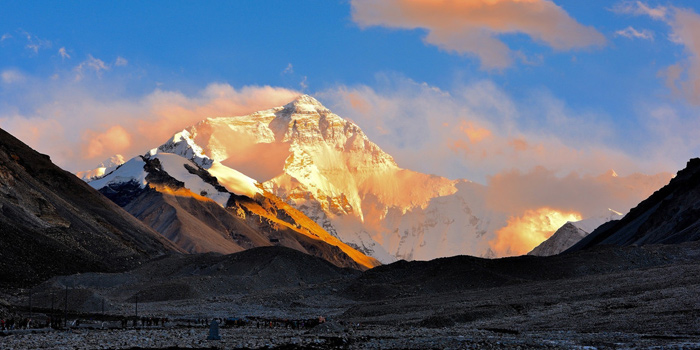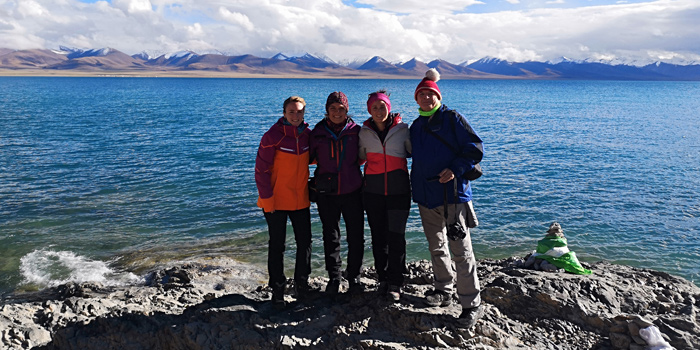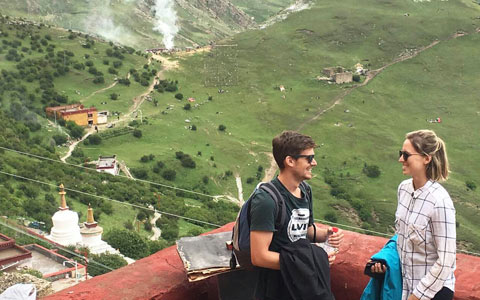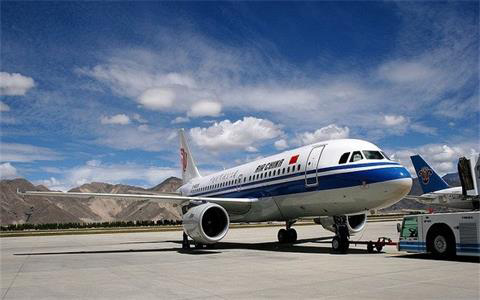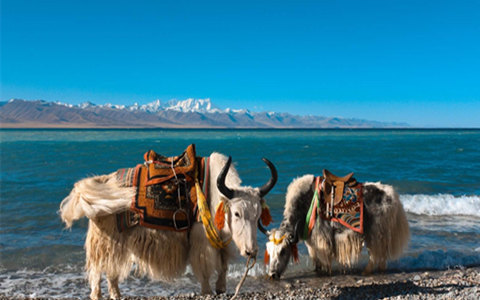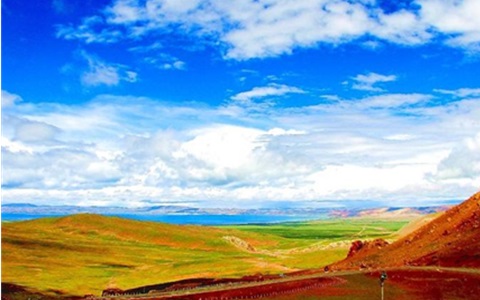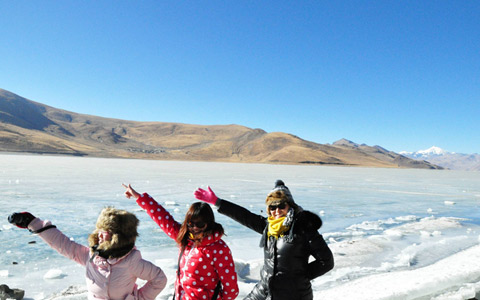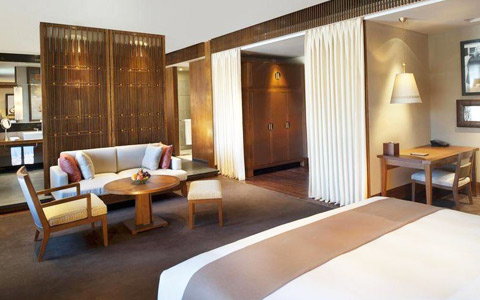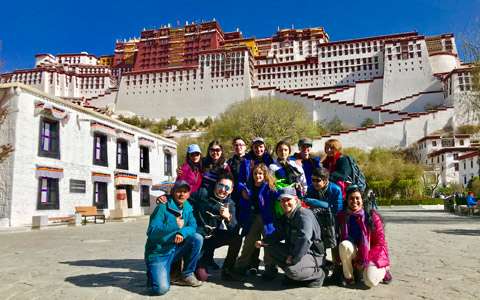Lhasa: The Capital of Tibet Then and Now
Lhasa, at 3658m, is known around the world as the spiritual, political, and economic center of Tibet. The iconic Potala Palace, with its chalk-white walls in stark contrast with the deep blue skies, is the most recognizable symbol of Tibet. Lhasa’s history stretches back for centuries and it is a symbol of how the people in the region can not only adapt to extreme conditions but also thrive.
Here’s a Lhasa, then and now.
 Is Lhasa the first capital city of Tibet?
Is Lhasa the first capital city of Tibet?
 What did Lhasa, the capital of Tibet, look like in the past?
What did Lhasa, the capital of Tibet, look like in the past?
 Why does Lhasa serve as the capital city of Tibet?
Why does Lhasa serve as the capital city of Tibet?
 How does Lhasa function as the capital of Tibet?
How does Lhasa function as the capital of Tibet?
 What does Lhasa, the capital of Tibet, look like nowadays?
What does Lhasa, the capital of Tibet, look like nowadays?
Is Lhasa the first capital city of Tibet?
Surprisingly, Lhasa was not the initial center of Tibet. Before Lhasa became the capital of Tibet Autonomous Region, Shannan had traditionally held that role.
In 629 AD, after Songtsen Gampo, the 33rd Zanpu (leader) of the Tubo Kingdom, unified all the tribes in Tibet, he selected Lhasa, situated in the Lhasa River Valley, as the new capital of Tubo. He made this choice due to its moderate climate, flat terrain, and fertile land.
What did Lhasa, the capital of Tibet, look like in the past?
Lhasa started as a simple city. During Songsten Gempo’s time, the foundation of the city began with construction of the Jokhang Temple, which served as the core of the early settlement. The Barkhor Street encircles the ancient town of Lhasa, encompassing the Jokhang Temple. The historic market square and pilgrim path have been carefully preserved, retaining a layout and architectural style that embodies traditional Tibetan design.
During your Lhasa tour, you can enjoy a panoramic view of the old town of Lhasa from the Potala Palace. As you climb the palace’s steps, you’ll witness the old town’s narrow valleys and whitewashed buildings that still have their historical charm and cultural character.
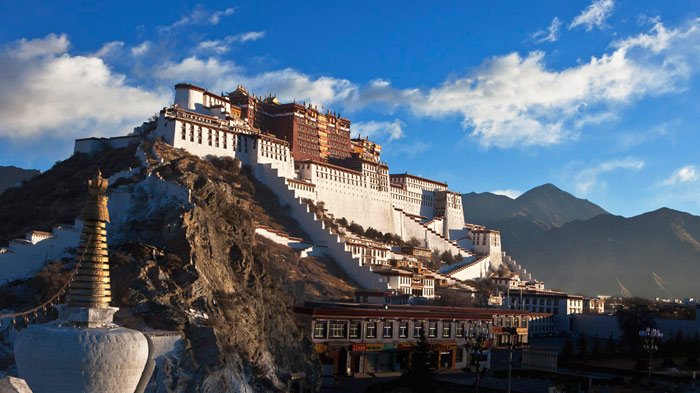 Potala Palace, the most iconic place of Tibet, from which you could have a panoramic view of the old town of Lhasa.
Potala Palace, the most iconic place of Tibet, from which you could have a panoramic view of the old town of Lhasa.
Why does Lhasa serve as the capital city of Tibet?
Lhasa is the natural capital of Tibet for several important reasons. Geographically, it is the center of Tibet making it the natural central point for administration and governance. Its central location helps to facilitate better connections between different parts of the region.
The Lhasa Valley Plain, where Lhasa is situated, is one of the most fertile areas in Tibet. This fertility is attributed to the Yarlung Tsangpo River, providing the necessary water resources for agriculture. The availability of arable land makes Lhasa an essential hub for sustenance and economic activities.
Moreover, Lhasa is deeply rooted in Tibetan history and spirituality, housing the revered Jokhang Temple and the iconic Potala Palace. These sacred sites hold immense cultural and religious importance, making Lhasa a spiritual epicenter and a natural choice for the provincial capital of Tibet.

A Tibetan pilgrim is worshipping Johang Temple in Lhasa, which is the religious center of Tibet.
How does Lhasa function as the capital of Tibet?
Lhasa functions as the capital of Tibet through a multifaceted role. Primarily, it serves as a focal point for religious and cultural activities, anchored by the presence of the Jokhang Temple and the iconic Potala Palace. These sacred sites draw pilgrims from across the region, making Lhasa a spiritual center for Tibetan Buddhism.
In addition to its religious significance, Lhasa has held political importance dating back to the 7th century. Over the centuries, it has maintained its status as a critical administrative and political center for Tibetan affairs.
(Simple click to enlarge the map)
Different administrative regions in Tibet
Lhasa's strategic importance extends to its function as a vital transportation hub. The Lhasa Gonggar Airport connects the city to major Chinese mainland cities, and the Lhasa Railway Station, operational since operation of the Tibet train in 2006, facilitates efficient communication between Lhasa and other regions. Lhasa's central location is pivotal in enabling the seamless movement of people and goods through an extensive road and rail network.
What does Lhasa, the capital of Tibet, look like nowadays?
In recent years, Lhasa has experienced significant modernization. Infrastructure development, urbanization, and the introduction of modern amenities have transformed the city's landscape. New buildings, roads, and public spaces contribute to Lhasa's being the most modern city in Tibet.
 Lhasa City in the evening.
Lhasa City in the evening.
This modernization has brought growth in Lhasa as a tourist destination, with the hospitality industry growing along with it. Lhasa boasts the highest number of hotels in Tibet, and offers a range of accommodation options, from traditional guesthouses to modern hotels.
Lhasa has also become a hub for culinary exploration, with a diverse range of restaurants offering both traditional Tibetan cuisine and international dishes. The city's food scene has evolved to include influences from neighboring regions and catering to the tastes of both locals and visitors.
How to plan your Tibet tour from Lhasa, the capital city?
Lhasa is always the first stop for Tibet tours because it’s the tranfer hub of Tibet. You can travel to Lhasa either by flight or by train. The Qinghai-Tibet Railway provides a breathtaking journey through the Tibet Plateau, while flights to Lhasa offer a quicker option. It’s crucial to acclimatize to the high altitude of Tibet, so consider spending at least a couple of days in Lhasa before venturing further.
Allow yourself 2 to 3 days in Lhasa to acclimatize to the high altitude and immerse in the local culture. It is enough for you to visit the highlighted sites like the Potala Palace, Jokhang Temple, Barkhor Street, Sera Monastery, and so on. These will not only introduce you to the city’s history but also give you a sense of Tibetan daily life.

Tibetan pilgrims are doing kora around holy Jokhang Temple along Barkhor Street.
When you're ready to explore beyond Lhasa, there are some fantastic options. If you head north to the serene Lake Namtso, it usually takes an extra two days. The popular journey from Lhasa to Everest Base Camp typically lasts eight days. For those planning to visit Mount Kailash from Lhasa, you'll need about 15 days to cover all the essential stops. Traveling to the east, you can enjoy the lush landscapes of Nyingchi. You can make your Tibet tour plan depending on your interests and times.
For different regions in Tibet, specific permits may be required in addition to the Tibet Travel Permit. These include the Alien Travel Permit and Military Permit.
The best time to visit Tibet is from April to October, when the weather is milder, and many trekking and outdoor activities are available. However, Lhasa is accessible year-round. For a more tranquil experience, consider traveling during the shoulder seasons to avoid large crowds.
Conclusion
While Lhasa has changed a lot in recent years, it still preserves the important features and landmarks of Tibetan culture and religion. Now is a better time than ever to visit the ancient capital of Tibet. Local infrastructure and tourist amenities are making a visit to Lhasa more convenient without impacting the experience of seeing the stunning natural beauty of the region. Contact us to find out more so we can help you arrange your visit to this truly unique location.

I am a tour guide in Tibet an was Born in Kham Tibet, I am the father of 2 little girls, bachelor's degree. I have more than 7-years experience of being a tour guide in Tibet. I am a warm, friendly, knowledgeable and attractive guy.
Related Articles & Posts
Most Popular Tibet Tour Packages
-

Lhasa - Gyantse - Shigatse - Everest Base Camp - Shigatse - Lhasa
USD939
View Details -

Lhasa - Gyantse - Shigatse - E.B.C - Saga - Kailash Trek - Darchen - Lake Manasarovar - Saga - Gyirong - Tingri - Lhasa
USD2059
View Details -

10 Days Lhasa to Everest Base Camp and Namtso Lake Small Group Tour
Lhasa - Gyantse - Shigatse - EBC - Shigatse - Lhasa - Namtso Lake - Damxung - Lhasa
USD1289
View Details -

8 Days Driving Across Himalaya Overland Adventure from Kathmandu to Lhasa
Kathmandu - Gyirong - Everest Base Camp - Tingri - Shigatse - Gyantse - Lhasa
USD1069
View Details -

4 Days Lhasa Impression Small Group Tour: Explore the Heart of Tibet and Mingle with the Locals
Lhasa
USD509
View Details -

Lhasa - Gyantse - Shigatse - Everest Base Camp - Gyirong - Kathmandu
USD979
View Details -

Lhasa - Gyantse - Shigatse- Lhasa
USD799
View Details -

13 Day Lhasa, Mt. Everest, Mt. Kailash, Lake Manasarovar and Kathmandu Adventure Tour
Lhasa - Gyantse - Shigatse - EBC - Saga - Darchen - Kailash Trek - Darchen - Saga - Gyirong - Kathmandu
USD2059
View Details


.jpg)



